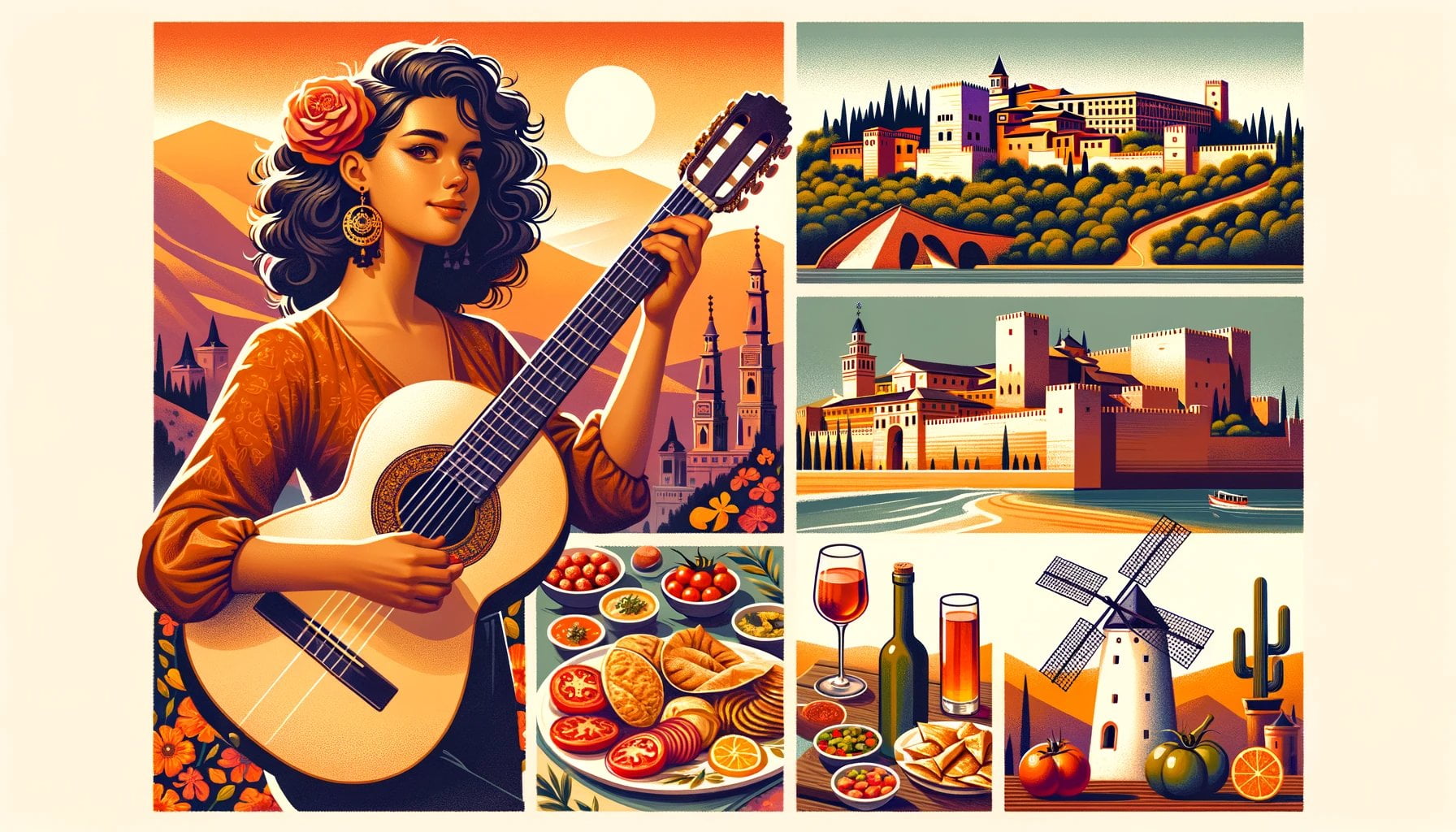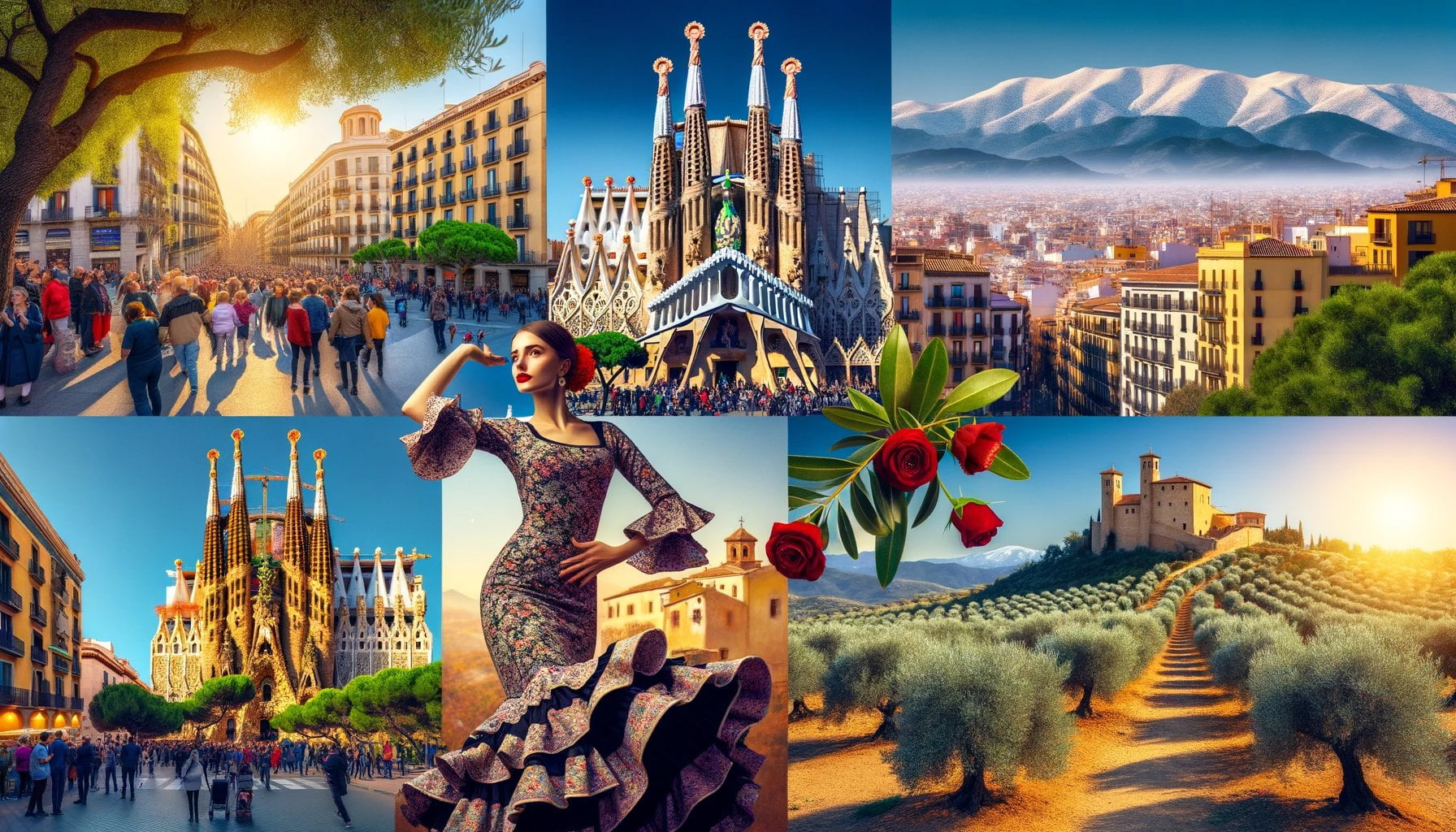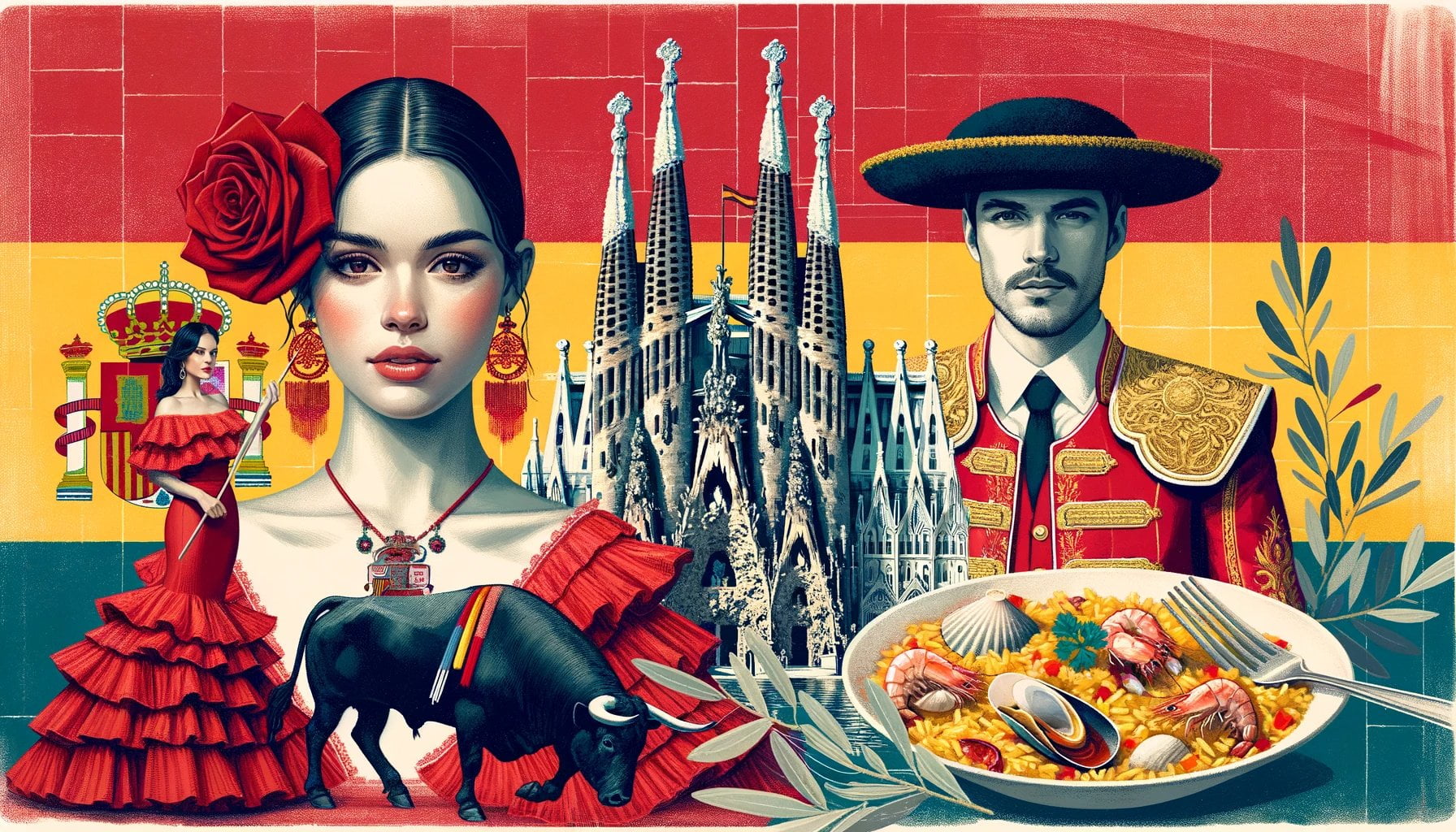Spain, a country deeply rooted in history and known for its vibrant culture, has never ceased to captivate travelers from around the world. With its enchanting landscapes, rich architectural heritage, and mouthwatering cuisine, Spain offers an immersive experience like no other. In this article, we will delve into five captivating facts that shed light on the allure and cultural significance of this fascinating country. From being the world’s biggest exporter of strawberries to boasting the oldest restaurant and the third longest coastline in Europe, Spain continues to leave a lasting impression on visitors seeking to unravel its secrets and immerse themselves in its vibrant tapestry. Join us on this journey as we unveil the captivating facts that make Spain the extraordinary destination it is today.
Key Takeaways:
- Spain shares a border with Morocco, making it the only European country to have a neighboring African country.
- Spanish is the world’s second-most spoken native language, with over 480 million speakers primarily in Latin America.
- Spain has the most extensive coastline in Europe, spanning over 8,000 km and attracting numerous tourists each year.
- Spain is renowned for its diverse culture, art, architecture, cuisine, and festivals, including flamenco, paella, tapas, and celebrated figures such as Gaudi and Picasso.
- The tradition of consuming 12 grapes at midnight on New Year’s Eve in Spain brings good luck.
- Spain is the second-largest country in the European Union after France, covering approximately 506,000 square kilometers.
- Spain’s history includes once being a collection of individual kingdoms before becoming a unified country in the 15th century.
- Spanish is the second-most widely spoken language globally, with around 440 million native speakers.
- Spain has the fifth-largest population in Europe, with the majority residing in urban areas.
- Nudity is legal in Spain, thanks to its Mediterranean climate and ample sunshine.
5 Facts About Spain: Unveiling its Allure and Cultural Significance

Spain, a country with a rich heritage and captivating traditions, is a treasure trove of fascinating facts. Let’s dive into five captivating facts about Spain that highlight its allure and cultural significance.
1. The Gateway Between Europe and Africa
Did you know that Spain is the only European country that shares a border with an African country? That’s right! Morocco can be seen from Spain across the mesmerizing Strait of Gibraltar. This unique geographic position has played a significant role in shaping Spain’s history and cultural exchange throughout the centuries.
2. The Language of Spanish: A Global Tongue
Spanish is not just spoken within Spain’s borders but also resonates across the globe. In fact, it is the second-most spoken native language in the world, with over 480 million speakers. The melodious sounds of Spanish reach far and wide, particularly in Latin America, where the language takes on diverse regional flavors and accents.
3. The Coastal Paradise
Boasting more than 8,000 km of stunning coastline and picturesque beaches, Spain offers an unrivaled coastal paradise in Europe. Sun seekers from around the world flock to its sun-kissed shores each year, seeking relaxation and the opportunity to bask in the Mediterranean splendor. From the vibrant Costa del Sol to the rugged beauty of Costa Brava, Spain’s breathtaking beaches captivate the hearts of millions.
4. A Cultural Kaleidoscope
Spain’s dynamic culture is a fascinating tapestry woven from diverse influences. From flamenco dancers moving with fiery passion to the mouthwatering aromas of paella and tapas, Spain is a sensory journey that delights travelers. It is also the birthplace of renowned artists like Gaudi and Picasso, whose avant-garde masterpieces continue to inspire and intrigue visitors. Don’t miss the chance to immerse yourself in the vibrant festivals like La Tomatina, where the streets turn into a sea of red as tomatoes fly through the air.
5. Grapes and Good Luck
One of the most charming traditions in Spain is the unique New Year’s Eve ritual of eating 12 grapes at midnight. Each grape represents a chime of the clock, and with every sweet bite, Spaniards welcome good luck and prosperity for the coming year. This whimsical tradition, enjoyed by families and friends, adds a touch of magic to the festive season in Spain.
With these five captivating facts, we’ve only scratched the surface of Spain’s allure and cultural significance. From its historical landmarks to its vibrant traditions and breathtaking landscapes, Spain beckons travelers to immerse themselves in its captivating tapestry of history, art, and unforgettable experiences. Get ready to embark on an enchanting journey through the heart of Spain and discover even more wonders that await you.
Check out the exceptional reasons why Spain is so interesting.
Discover what Spain is famous for and marvel at its remarkable offerings.
Indulge in the beauty found across every corner, and uncover what is beautiful about Spain.
What is beautiful about Spain?
The Oldest Restaurant in the World is in Spain.
Spain is a country steeped in rich history and cultural significance. From its ancient traditions to its architectural marvels, this diverse nation has captured the fascination of travelers for centuries. One captivating fact about Spain that sheds light on its allure and cultural significance is that it is home to the oldest restaurant in the world – Sobrino de Botín.
1. The History Behind Sobrino de Botín
Established in 1725, Sobrino de Botín has a remarkable history spanning almost 300 years. Located in the heart of Madrid, this renowned restaurant has retained its authenticity and charm throughout the ages. It has become an essential part of Spain’s cultural heritage, attracting both locals and international visitors eager to experience its traditional Spanish cuisine.
2. Traditional Spanish Dishes and Wood-Fired Oven
Sobrino de Botín is known for its wood-fired oven, a feature that has remained unchanged since its inception. This unique culinary tradition allows the restaurant to create exceptional dishes with a distinctive flavor and texture. The menu at Sobrino de Botín boasts a wide array of traditional Spanish delicacies, including succulent roast lamb, roasted suckling pig, and delectable seafood dishes.
3. Tapas, a quintessential Spanish Experience
When exploring Spain’s vibrant culinary landscape, it is impossible to overlook the significance of tapas. These small snacks, often served alongside drinks, are a cherished part of Spain’s food culture. Sobrino de Botín embraces the tradition of tapas, offering an array of bite-sized delights that showcase the diverse flavors and culinary expertise of Spain.
4. Spain’s Abundance of Bars
Aside from its oldest restaurant, Spain is famous for its abundance of bars. In fact, it is among the top countries in the world with the highest number of bars per capita. Spaniards have a deep appreciation for socializing and enjoying the vibrant atmosphere of their local bars, which often serve as community hubs. This cultural phenomenon adds to Spain’s allure and highlights the importance of communal experiences in Spanish society.
5. Spain’s Leading Olive Oil Production
Spain holds the prestigious title of being the leading producer of olive oil in the world. Olive oil is a staple ingredient in traditional Spanish cuisine and plays a crucial role in creating the exquisite flavors that define the country’s dishes. This fact underscores Spain’s commitment to culinary excellence and its dedication to preserving ancient traditions.
Whether you’re a history buff, a food enthusiast, or simply captivated by Spain’s enchanting allure, the oldest restaurant in the world, Sobrino de Botín, is a must-visit destination. Exploring its rich history, indulging in its delectable dishes, and immersing yourself in the vibrant Spanish culture are experiences that will undoubtedly leave a lasting impression.
Key Takeaways:
– Sobrino de Botín, located in Madrid, is the oldest restaurant in the world, dating back to 1725.
– The restaurant is revered for its traditional Spanish dishes and wood-fired oven, which adds a unique flavor to its offerings.
– Tapas, small snacks served alongside drinks, are an integral part of Spanish food culture and can be enjoyed at Sobrino de Botín.
– Spain’s abundance of bars showcases its lively social scene and the importance of communal experiences in the country.
– As the leading producer of olive oil, Spain’s dedication to culinary excellence is showcased in its traditional cuisine.
Spain has the Third Longest Coastline in Europe.
Spain, the land of rich heritage and captivating traditions, is not only known for its vibrant culture and historical sites but also for its breathtaking coastline. With a coastline stretching over 4,964 kilometers, Spain proudly holds the title of having the third longest coastline in Europe.
Picture yourself standing on the shores of Spain, feeling the gentle breeze sweep through your hair as you gaze out at the vast expanse of the deep blue sea. The Spanish coastline, with its diverse landscapes and stunning beaches, offers an enchanting experience that attracts visitors from around the world.
From the rugged cliffs of the Costa Brava to the picturesque coves of the Balearic Islands, Spain’s coastline is a paradise for beach lovers and nature enthusiasts alike. The Mediterranean Sea gently kisses the eastern coast of Spain, while the Atlantic Ocean embraces its western shores, creating a diverse range of coastal ecosystems.
Spain’s coastline is not only a haven for relaxation and sun-soaked adventures but also a gateway to a treasure trove of history and culture. Along its shores, you can find ancient Roman ruins, medieval castles, and charming fishing villages that tell tales of Spain’s fascinating past.
When exploring Spain’s coastline, make sure to visit the Costa del Sol in Andalusia, renowned for its golden beaches and vibrant nightlife. The Costa Blanca in the Valencian Community offers stunning white sandy beaches and crystal-clear waters, while the Costa Brava in Catalonia boasts dramatic cliffs and hidden coves waiting to be discovered.
But the beauty of Spain’s coastline doesn’t end there. Venture further to the Canary Islands, a Spanish archipelago located off the northwest coast of Africa, and you’ll be greeted by breathtaking volcanic landscapes and black sand beaches that are unlike anything you’ve seen before.
With its third longest coastline in Europe, Spain offers a wealth of opportunities for coastal exploration, whether you’re seeking relaxation, adventure, or a deeper understanding of the country’s rich history. So pack your swimsuit, grab your sunglasses, and get ready to embark on an unforgettable journey along the shores of Spain.
Key Takeaways:
– Spain has the third longest coastline in Europe, spanning over 4,964 kilometers.
– The Spanish coastline is known for its diverse landscapes, stunning beaches, and vibrant cultural heritage.
– From the Costa Brava to the Balearic Islands, Spain’s coastline offers a wide range of beach destinations to explore.
– The Mediterranean Sea and the Atlantic Ocean border Spain, creating a unique blend of ecosystems along the coast.
– Along the Spanish coastline, visitors can discover ancient ruins, medieval castles, and charming fishing villages that reflect the country’s rich history and culture.
References:
– “Geography of Spain” – La Moncloa. [URL]
– “Geography of Spain” – Wikipedia. [URL]

FAQ
Q1: Is Spain the world’s biggest exporter of strawberries?
A1: Yes, Spain holds the title of being the world’s biggest exporter of strawberries, highlighting its significant role in the global strawberry market.
Q2: Are two of the world’s biggest football clubs based in Spain?
A2: Absolutely, Spain is home to two of the world’s biggest football clubs, showcasing the country’s strong presence and influence in the international soccer scene.
Q3: Where is the oldest restaurant in the world located?
A3: The oldest restaurant in the world, Sobrino de Botín, is located in Madrid, Spain, boasting almost 300 years of history behind it.
Q4: Does Spain have the third longest coastline in Europe?
A4: Yes, Spain indeed has the third longest coastline in Europe, measuring approximately 4,964 kilometers. This extensive coastline contributes to the country’s diverse landscapes and beautiful beaches.
Q5: What are some notable features of Spain’s coastline?
A5: Spain’s coastline is characterized by its stunning beaches and varied terrains. With a length of 5,755 kilometers, the Spanish coastline showcases diverse altitudes and landscapes, attracting visitors from around the world.















